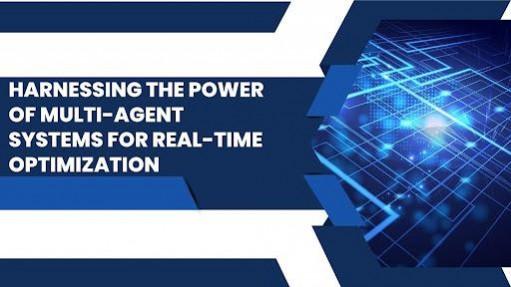
In the ever-evolving landscape of artificial intelligence, Multi-Agent Reinforcement Learning (MARL) stands out as a transformative innovation, enabling real-time system optimization. Mohit Agarwal explores this breakthrough, offering both theoretical insights and practical applications of MARL in addressing complex optimization challenges across industries. His research highlights how MARL outperforms traditional single-agent systems, paving the way for advanced solutions. By enabling autonomous agents to adapt, MARL opens new possibilities for collaborative intelligence in dynamic environments.
A Shift to Collaborative Intelligence
MARL represents a shift from single-agent systems to dynamic, multi-agent environments. While single-agent systems work for simple tasks, they struggle with the complexity of interconnected systems involving multiple stakeholders. By enabling autonomous agents to operate and learn simultaneously in a shared environment, MARL offers a more sophisticated and efficient solution. This distributed decision-making framework is essential for real-time systems, where agents must respond to changes quickly and collaboratively. The flexibility of MARL also allows for scalability, enabling it to adapt to larger, more complex systems. The MARL architecture integrates agents with local observation and decision-making capabilities, creating a robust system that benefits from parallel processing. However, this decentralized structure introduces challenges, requiring innovative communication protocols and reward distribution mechanisms to ensure system stability.
Effective Communication: The Backbone of Cooperation
In MARL systems, communication between agents is crucial for optimizing performance. Advanced communication protocols balance information exchange with bandwidth constraints, allowing agents to determine when and with whom to communicate. This reduces network overload while maintaining system stability. Reward sharing mechanisms guide agents toward collective goals, balancing individual incentives with system-wide objectives. By ensuring efficient communication and coordination, MARL systems can achieve higher levels of synchronization and responsiveness, even in dynamic environments.
Overcoming Implementation Challenges
Implementing MARL comes with challenges, particularly learning stability in dynamic environments. Traditional algorithms struggle with fluctuating conditions. Incremental learning techniques help agents adapt without destabilizing the system. Additionally, goal conflict resolution is essential, with dynamic negotiation protocols ensuring alignment with broader system goals. These techniques allow the system to maintain optimal performance while navigating uncertainty and unpredictability in real-time operations.
Practical Applications in Real-World Scenarios
MARL systems are making strides in real-world applications. In smart city traffic management, autonomous traffic signals optimize traffic flow, reducing commute times and emissions. In food delivery systems, MARL optimizes delivery routes by factoring in real-time data, such as traffic conditions and driver availability. This enables more efficient resource allocation and improves overall system performance, making it adaptable to fluctuating urban environments.
Looking to the Future: Expanding Horizons
The future of MARL is promising, particularly with applications in edge computing and AI-driven smart infrastructure. Integrating AI-enabled video analytics with MARL can enable real-time decision-making in smart cities, enhancing automated traffic management and public safety monitoring. Challenges such as energy efficiency and memory limitations will need to be addressed in resource-constrained environments, but continuous advancements will likely drive greater adoption across industries. As these technologies evolve, they will unlock new opportunities for more sustainable and scalable solutions in a wide range of sectors.
A New Era of System Optimization
MARL's integration into real-time system optimization represents a leap in artificial intelligence. By leveraging distributed decision-making, communication, and adaptive learning, MARL systems offer robust solutions across multiple industries. As MARL evolves and integrates with cutting-edge technologies, its potential to transform real-time system management grows, paving the way for more efficient and dynamic systems.
In conclusion, Mohit Agarwal's work provides valuable insights into the transformative capabilities of MARL, highlighting its potential to drive innovation and efficiency in complex, real-time environments. By addressing critical challenges such as agent coordination and resource optimization, his research paves the way for more effective and adaptable solutions across diverse industries.

















